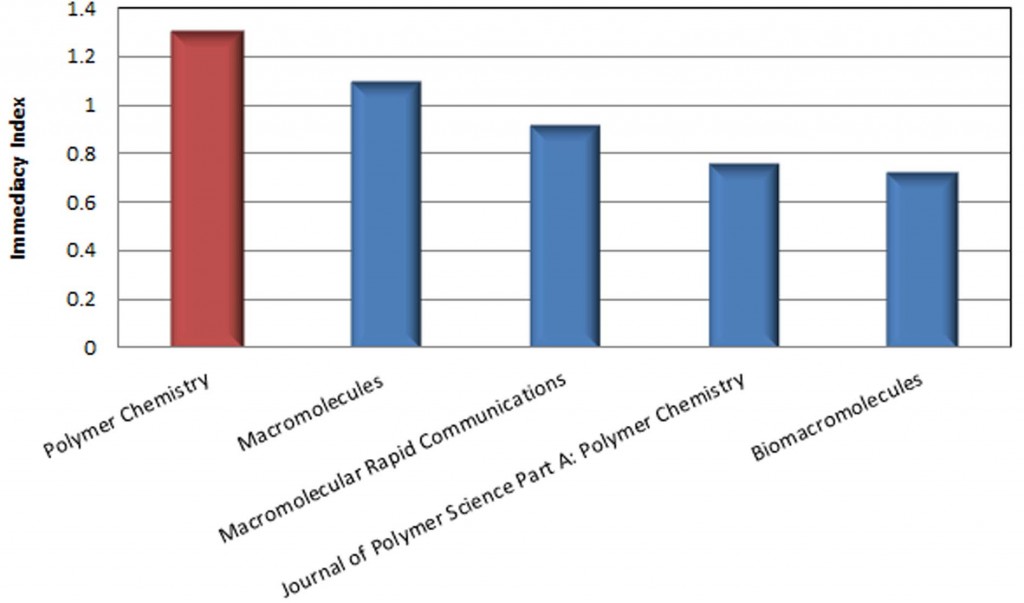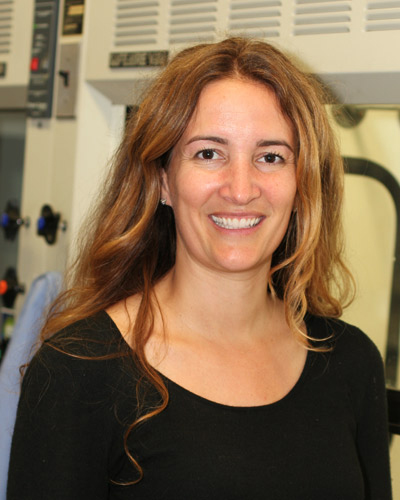Below are the ten most-read Polymer Chemistry articles of 2012 that were published in 2012:
1.) Synthesis of biodegradable polymers from renewable resources
Mathieu J.-L. Tschan, Emilie Brulé, Pierre Haquette and Christophe M. Thomas
Review Article. Polym. Chem., 2012, 3, 836-851, DOI: 10.1039/C2PY00452F
2.) Cationic methacrylate polymers containing chiral amino acid moieties: controlled synthesis via RAFT polymerization
Sonu Kumar, Saswati Ghosh Roy and Priyadarsi De
Paper, Polym. Chem., 2012, 3, 1239-1248, DOI: 10.1039/C2PY00607C
3.) Self-assembled amino acids and dipeptides as noncovalent hydrogels for tissue engineering
Derek M. Ryan and Bradley L. Nilsson
Review Article, Polym. Chem., 2012, 3, 18-33, DOI: 10.1039/C1PY00335F
4.) Double click reaction strategies for polymer conjugation and post-functionalization of polymers
Hakan Durmaz, Amitav Sanyal, Gurkan Hizal and Umit Tunca
Review Article, Polym. Chem., 2012, 3, 825-835, DOI: 10.1039/C1PY00471A
5.) An isoindigo and dithieno[3,2-b:2′,3′-d]silole copolymer for polymer solar cells
Romain Stalder, Caroline Grand, Jegadesan Subbiah, Franky So and John R. Reynolds
Communication, Polym. Chem., 2012, 3, 89-92, DOI: 10.1039/C1PY00402F
6.) Terminal functional glycopolymers via a combination of catalytic chain transfer polymerisation (CCTP) followed by three consecutive click reactions
Qiang Zhang, Stacy Slavin, Mathew W. Jones, Alice J. Haddleton and David M. Haddleton
Paper, Polym. Chem., 2012, 3, 1016-1023, DOI: 10.1039/C2PY20013A
7.) Grignard metathesis (GRIM) polymerization for the synthesis of conjugated block copolymers containing regioregular poly(3-hexylthiophene)
Mihaela C. Stefan, Mahesh P. Bhatt, Prakash Sista and Harsha D. Magurudeniya
Review Article, Polym. Chem., 2012, 3, 1693-1701, DOI: 10.1039/C1PY00453K
8.) Functional block copolymer nanoparticles: toward the next generation of delivery vehicles
Maxwell J. Robb, Luke A. Connal, Bongjae F. Lee, Nathaniel A. Lynd and Craig J. Hawker
Paper, Polym. Chem., 2012, 3, 1618-1628, DOI: 10.1039/C2PY20131C
9.) Functional conjugated microporous polymers: from 1,3,5-benzene to 1,3,5-triazine
Shijie Ren, Robert Dawson, Andrea Laybourn , Jia-xing Jiang, Yaroslav Khimyak, Dave J. Adams and Andrew I. Cooper
Paper, Polym. Chem., 2012, 3, 928-934, DOI: 10.1039/C2PY00585A
10.) Naphtho[1,2-b:5,6-b′]dithiophene-based conjugated polymer as a new electron donor for bulk heterojunction organic solar cells
Pranabesh Dutta, Hanok Park, Woo-Hyung Lee, Kyuri Kim, In Nam Kang and Soo-Hyoung Lee
Communication, Polym. Chem., 2012, 3, 601-604,DOI: 10.1039/C2PY00424K
 This highlights the continued success of the journal and reinforces its place in the field.
This highlights the continued success of the journal and reinforces its place in the field.










